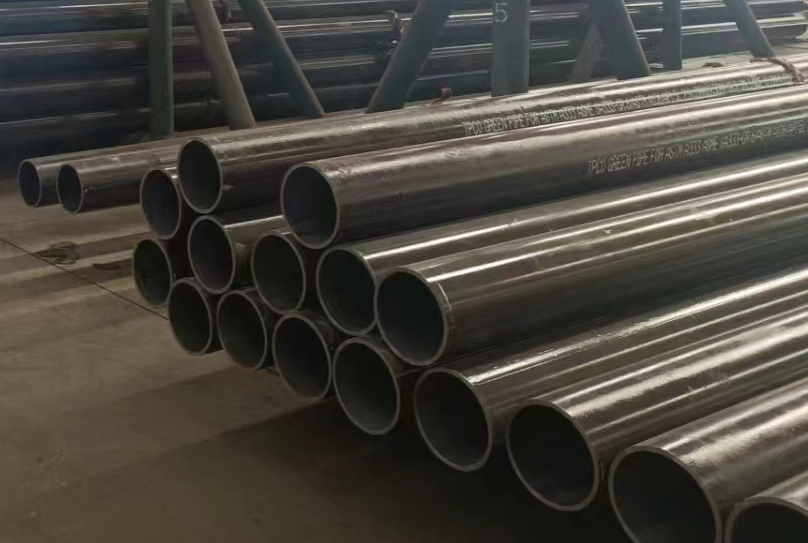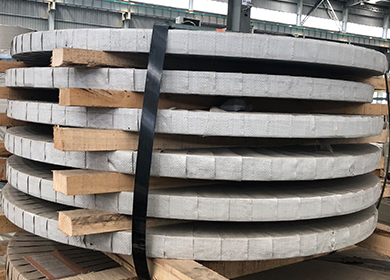In the field of industrial manufacturing, steel materials occupy a pivotal position. Among them, AISI 1010 carbon steel (UNS G10100), as a widely used low-carbon steel, plays a key role in many engineering applications with its unique composition and excellent performance. From the stability of building structures to the precision manufacturing of automotive parts to ensuring the durability of everyday items, AISI 1010 carbon steel plays an indispensable role. In this article, we will introduce in detail the composition, properties, and uses of AISI 1010 carbon steel.

AISI 1010 Carbon Steel (UNS G10100) – Composition, Properties, and Uses
I. Composition of AISI 1010 Carbon Steel:
AISI 1010, a type of low-carbon steel, primarily consists of carbon (C) with minor amounts of silicon (Si), manganese (Mn), phosphorus (P), and sulfur (S). Its carbon content typically ranges from 0.07% to 0.13%, granting it excellent weldability and formability due to its relatively low carbon content.
- Carbon (C): Carbon is one of the most crucial elements in steel, directly influencing its strength, hardness, weldability, and toughness. The low carbon content of AISI 1010 ensures good machinability and ductility.
- Silicon (Si): Silicon acts as a deoxidizer in steel, helping to reduce oxygen content and subsequently enhancing its mechanical properties. Silicon content in AISI 1010 typically falls between 0.15% and 0.35%.
- Manganese (Mn): Manganese plays a role in strengthening and deoxidizing steel, increasing its strength and hardness. In AISI 1010, manganese content is typically within the range of 0.30% to 0.60%.
- Phosphorus (P) and Sulfur (S): Phosphorus and sulfur are impurity elements in steel, and their content should be kept as low as possible. Phosphorus can compromise the ductility and weldability of steel, while sulfur can lead to brittleness. In AISI 1010, phosphorus content is typically limited to 0.04% or less, and sulfur content is limited to 0.05% or less.
In addition to the aforementioned primary elements, AISI 1010 may also contain minor amounts of other alloying elements such as chromium (Cr) and nickel (Ni) to enhance specific properties of the steel.
II. Properties of AISI 1010 Carbon Steel:
- Mechanical Properties of AISI 1010 Carbon Steel: Despite its low carbon content, AISI 1010 exhibits considerable strength and hardness, making it suitable for fabricating components and parts that require bearing certain loads. Furthermore, its excellent toughness and ductility allow it to absorb energy upon impact or vibration, thereby reducing the risk of fracture.
- Workability: Thanks to its low carbon content and good ductility, AISI 1010 offers exceptional weldability, cuttability, drillability, and machinability. These characteristics facilitate various forming processes, enabling the fabrication of intricate shapes and parts.
- Heat Treatment Capabilities: AISI 1010 can undergo heat treatment processes such as quenching and tempering to enhance its mechanical properties. Quenching increases the steel’s hardness and strength, while tempering eliminates internal stresses developed during quenching, improving its toughness and ductility.
- Corrosion Resistance: Compared to some stainless steels, AISI 1010 exhibits inferior corrosion resistance. However, it still demonstrates good corrosion resistance in dry environments. If improved corrosion resistance is desired, surface coatings or paints can be applied.
III. Uses of AISI 1010 Carbon Steel:
Due to its excellent mechanical properties and workability, AISI 1010 carbon steel finds widespread applications across multiple sectors.
- Construction and Structural Applications: AISI 1010 is commonly used in the construction and structural field, such as beams, columns, bridges, and more. Its high strength and good toughness make it an ideal choice for these applications.
- Mechanical Parts: The good machinability and mechanical properties of AISI 1010 make it an ideal material for fabricating various mechanical parts, including gears, shafts, bearings, and the like.
- Automotive Industry: In the automotive industry, AISI 1010 is often utilized for the manufacture of non-critical components, such as brackets, trim parts, and other elements.
- Other Applications: Additionally, AISI 1010 can be used for fabricating various products, including agricultural machinery, furniture, containers, and numerous other items.
Conclusion
In summary, AISI 1010 carbon steel plays an important role in industry and manufacturing due to its excellent mechanical properties, processing characteristics, and wide range of applications.
Thank you for reading our article and we hope it can help you to have a better understanding of the composition, properties, and uses of AISI 1010 Carbon Steel (UNS G10100). If you are looking for AISI 1010 Carbon Steel suppliers across the world, please don’t hesitate to contact Huaxia Steel.
As a leading supplier of carbon steel products across the world, Huaxia Steel provides customers with high-quality AISI 1010 Carbon Steel (UNS G10100), S20C Steel (AISI 1020 Steel), tool steel, alloy steel, carbon steel tubes, and carbon steel pipes at a very competitive price.







